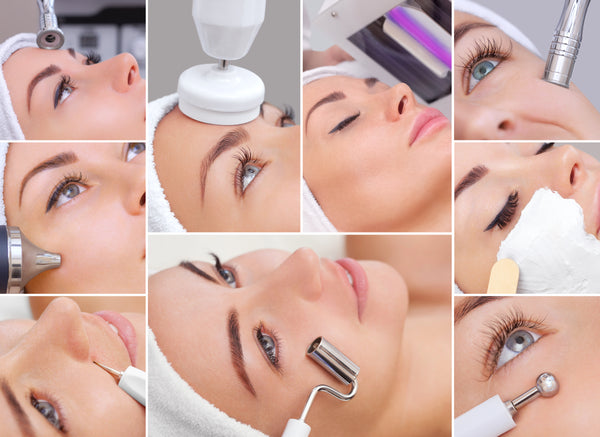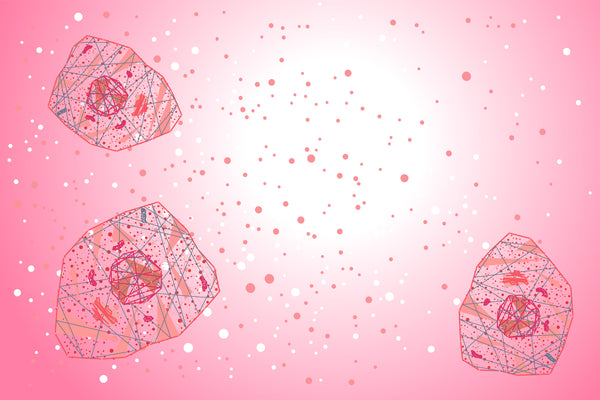
History demonstrates that hair removal methods have been around for a long time. When most people think of evolution, they automatically picture a hairy caveman; however, hair removal has been around since the Stone Age, approximately 10,000 BC, from which there are ancient paintings showing cavemen using two seashells as tweezers.
As far back as 30,000 BC, flint, a hard form of mineral quartz with sharp edges, was used as a shaving device. Technology has come a long way since then. One example is laser hair removal systems that have been developed to permanently reduce the amount of hair that grows. According to the American Society of Aesthetic Plastic Surgery, laser hair removal is the third most popular nonsurgical cosmetic procedure performed in the United States,and according to www.surgery.org, the organization’s website, there were 1,280,031 laser hair removal procedures performed in 2009. Even though hair removal has evolved since the Stone Age, it still has a long way to go. New devices are constantly being developed that are more effective and easier to use than what was available as recently as several years ago.
Hair removal in society
There are many times when society has made hair removal popular. In a 1915 edition of Harper’s Bazaar magazine, a model was featured showing bare shoulders and underarms. This prompted the Wilkinson Sword company, which made razor blades for men, to design a campaign convincing women that underarm hair was neither feminine nor hygienic. Within two years, the sales of razor blades doubled, and now removing underarm hair has become the norm for North American women. In the 1920s and 1930s, Hollywood starlets were removing their eyebrows so they could draw thin, exaggerated brows with makeup pencils. Taking their fashion cues from the movies, many women followed suit, and having arched eyebrows is still popular today. These are only a few examples where removing hair has made its mark in history.
Shaving
One of the most ancient and popular methods of hair removal is shaving, which is a relatively easy process, especially with today’s shaving devices. Similar to ancient times when flint was used, most consumers use disposable razors, replacing them often as the edges become dull. In 1901, Gillette, with help from a Massachusetts Institute of Technology (MIT) engineer, developed the safety razor with blades that were disposable and replaceable. The company received a patent for it in 1904, and left its mark on history as the company to use for shaving when, during World War I, it made a deal with the U.S. Armed Forces to provide the safety razor and blades to all enlisted men going to Europe. In 1927, the first electric dry shaver with oscillating blades was invented by Colonel Jacob Schick, and was made available in 1929 to consumers. Despite the low cost involved upfront, shaving is time-consuming. On average, a woman who shaves her legs will spend a total of 225 hours—nine days and nine hours—on the task during a five-year span.
Depilation
The use of chemical depilatories dates back to 4,000–3,000 BC when people used the first chemical depilatory called rhusma. This blend contained harsh chemicals, such as caustic lime and arsenic. Other depilatories used in the past contained resin, white vine or ivy gum extracts. Many of today’s depilatories contain the powerful ingredient calcium thioglycolate, which works by destroying the protein structure of hair, reducing its texture and strength. Because of its widespread marketing campaign in the mid 1980s—“If you dare wear short shorts, Nair for short shorts”—Nair remains the best known hair removal lotion. Chemical depilatories are still widely used today, but their results don’t last long, and they can be irritating to the skin, especially in sensitive areas.
Threading
Threading is an ancient method of hair removal that has been around for hundreds of years; most often referenced in what is now modern-day Iran, Turkey and India. There are many thoughts as to where this method of hair removal originated, the most popular being in ancient Persia and Turkey. In ancient Persia, body hair removal was a rite of passage and signaled passing from girlhood to womanhood. Only married women were allowed to do it, and it was a significant ritual. This service is performed by looping a cotton thread around multiple hairs at a time to remove them from the follicle. If done correctly, this method can provide results that last around 4–6 weeks, similar to waxing. Some prefer this service to others because there is little-to-no irritation on the epidermis. It can still have some of the same side effects as other methods of hair removal, including folliculitis, which is inflammation of the hair follicle. Clients who prefer threading to other methods typically have it done on facial areas such as the eyebrows, lips and peach fuzz. Threading can remove an entire row of hair at a time resulting in a straighter line than tweezing, so it is a great treatment for shaping the eyebrows. If done by a trained professional, it truly is an art.
Waxing
Waxing dates back to the ancient Egyptians, where the wives of the pharaohs removed hair with sticky emulsions made of oil and honey. This technique is similar to a form of waxing called sugaring that is still commonly used. South American women would wax hair using secretions from the coco de mono tree. In the 1960s, waxing was rediscovered with the invention of the bikini wax, and in 1994, the Brazilian bikini wax was introduced by The J. Sisters International Salon in Manhattan, and is one of the most requested waxing services today. Waxing remains a good treatment, and it is effective for those who want longer-lasting results, but are unable to receive other hair removal procedures.
For example, in the case of eyebrow waxing, laser is unable to be performed because it is too close to the eye, and it is not possible to shape the eyebrows effectively given the size of most laser hair removal tips. Waxing as well as dermaplaning are also great methods for removing vellus hair, commonly called “peach fuzz.” When waxing is done properly, the hair should not grow back for about four to six weeks. The downside of waxing is that it can be time-consuming, expensive and frustrating because of the need to let the hair grow out between treatments.
Electrolysis
Electrolysis is a form of hair removal that was developed in 1875 by Missouri ophthalmologist Charles E. Michel, MD, when he started using a surgical needle with galvanic current to treat ingrown eyelashes. Electrolysis is still performed by many licensed individuals, although after the invention of laser hair removal, this method is not preferred by most. Electrolysis still has its place for those that require a couple of hairs to be removed from a particular area, including unwanted hairs on the chin. It is the only method available for permanent removal on nonpigmented hair, since there is no laser yet available that can treat blonde, red or gray hair effectively. The treatments can be very tedious because the technician can only treat one hair at a time, which can be painful for the client. Also, there are some risks associated with this method that can deter patients from considering the procedure, including hyperpigmentation, hypopigmentation, infection and even scarring.
Laser hair removal
In 1995, the U.S. Food and Drug Administration (FDA) approved the first laser hair removal device, the Nd:YAG. This device is still an effective laser for hair removal, but now is most often used for patients with darker skin because the light travels deeper into the dermis and reduces the chances of hyperpigmentation or hypopigmentation, a possible complication with clients with darker skin tones. Later in the early 2000s, many other laser devices were cleared for the use of laser hair reduction including ruby, alexandrite and diode lasers. Intense pulsed light (IPL) is also widely used for hair removal, although visible light lasers have been proven to be more effective because there is more energy directed at the target—the pigment in the hair follicle.
Although there have been many effective hair removal devices, traditionally there have been drawbacks to all of them. Some lasers have very small spot sizes, resulting in laser hair removal sessions that can take up to four hours, depending on the size of the area being treated. Comfort has also been a big issue—with the older laser devices, patients would often need a topical numbing agent to ease the pain of the treatment. Although there are cooling tips on many of the devices now, it can still be painful to some, especially those with dark, coarse hair. Now, there are hair removal lasers that have larger spot sizes, so treatments can be done in minutes as opposed to hours, and there are new ways to reduce the amount of pain as well. One such device utilizes suction to effectively eliminate blood, allowing the energy to focus on the melanin in the follicle. It also distracts the nerve so the patient doesn’t feel the sharp heat normally associated with these treatments. (Editor’s note: In most states, physicians are required to perform laser hair removal services, or be on site when laser hair removal services are taking place. Before offering these treatments in your spa, be sure to check your state’s requirements. Click here for each state board’s direct contact information.)
At-home hair removal systems
There are now even at-home hair removal systems using laser light. One option uses a diode laser, but there are other devices available including one that uses pulsed light enhanced by an acoustic effect. These systems must be sold by a physician with strict instructions for the patient. One drawback is that the amount of energy used in these devices does not compare to what can be administered in a medical office, so there is some controversy about whether or not they are effective. If there is not enough energy deposited into the follicle, the hair will not be destroyed. There are also risks associated with patients having these devices at home. Some may overdo it and others may use it when inappropriate, such as after tanning.
Continued growth
The future of hair removal is unknown, but it is continually evolving. There will always be a place for hair removal in society, including the methods that have been around since the Stone Age. It is a billion-dollar industry that is expected to enjoy continued growth. Even in the down economy of 2009, nearly 1.3 million laser hair removal treatments were performed, at an average national cost of $331 per treatment. What this means is that hair removal technology can be a strong investment to bring into your spa or medical spa. Consider making one or many of today’s hair removal options available to your clients.
GENERAL REFERENCES
KC Gillette, The People’s Corporation, Boni and Liveright, New York (1924)
www.harpersbazaar.com/magazine/140-years/bazaar-140-0307
inventors.about.com/library/inventors/blrazor.htm
www.docshop.com/2010/07/19/the-evolution-of-laser-hair-removal
www.beautyworlds.com/cultureofirantext.htm
(All accessed Oct 19, 2010)
 Terri Wojak is a licensed esthetician with more than 14 years of experience and has knowledge of all aspects of the skin care industry, including education, sales, medical aesthetics, management and ownership. She is the director, as well as an educator, at True University Esthetics in Chicago.
Terri Wojak is a licensed esthetician with more than 14 years of experience and has knowledge of all aspects of the skin care industry, including education, sales, medical aesthetics, management and ownership. She is the director, as well as an educator, at True University Esthetics in Chicago.
 This article appeared in the January 2011 issue. Find more on this topic in the digital magazine.
This article appeared in the January 2011 issue. Find more on this topic in the digital magazine.



0 comments